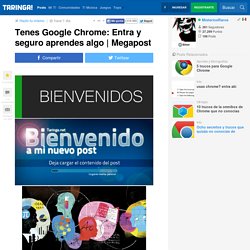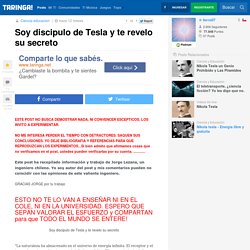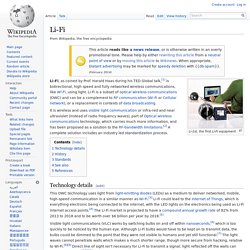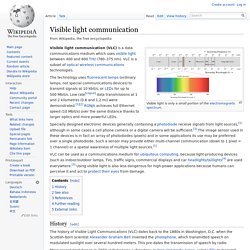

Tenes Google Chrome: Entra y seguro aprendes algo. Visitas Me tomó más de una semana escribir y organizar todo, recopilar la información importante y editar las imágenes y gifs, espero sepan valorar mi esfuerzo.

Veraz trucos y herramientas que probablemente te sean de utilidad. ¡Sin más que decir, espero que disfrutes del post! Si quieres toca la bateria Google te lanza un dado o moneda Si no tienes una moneda en mano, Google con gusto lanza esa moneda por ti. Sin embargo actualmente también Funciona en Android con la aplicación de Google Now. Convierte cantidades monetarias Google no quiere que te dirijas a otros sitios con tus necesidades de conversión de unidades. Fotos que cambiarán tu forma de ver la historia. Ciudad de Chicago, 1909 William Harley, y Arthur Davidson en 1914.

Soy discipulo de Tesla y te revelo su secreto - Taringa! NO ME INTERESA PERDER EL TIEMPO CON DETRACTORES.

Taringa! - Curiosidades del mundo de los comics. Article-2114856-122FC22C000005DC-394_964x1058.jpg (JPEG Image, 964 × 1058 pixels) - Scaled (94%) WEPN-FM - ESPN New York 98.7 FM New York, NY. LIVE WEBINAR: Making HTML5 Games using Flash Professional. As you already know, Flash Professional now supports native authoring for HTML5 Canvas.

Join Colin Holgate from Funny Garbage as he goes through his personal experience in creating a game for this platform. Date – 21st April 2015 Time – 8:00 AM PST (Check your local time) Where – Join Here (Please join 15 minutes before the session. Enter as guest with your email id) Please sign up here to receive information about the upcoming webinars. Proscene v2.0.5 Released - Jean Pierre Charalambos. P3D. This tutorial is for Processing version 2.0+.

If you see any errors or have comments, please let us know. This work is licensed under a Creative Commons Attribution-NonCommercial-ShareAlike 4.0 International License. PShape. If you see any errors in this tutorial or have comments, please let us know.

This work is licensed under a Creative Commons Attribution-NonCommercial-ShareAlike 4.0 International License. Daniel Shiffman. Call for advanced data matching video tutorials. I Eat Bugs For Breakfast. I’ve been thinking about Grasshopper 2.0 for a while now and there are a lot of facets to the project where I’d like to see improvement.

One of the things I’m looking into is incorporating 3rd party code libraries that would provide advanced statistical and algorithmic functionality. One of the libraries I’ve been browsing is the Microsoft Solver Foundation whose main purpose is to solve optimization problems. Gramazio Kohler Research. Diccionario español-inglés. English to French, Italian, German & Spanish Dictionary - WordReference.com.
Traductor de Google. Tokyo Narita aeropuerto a Yoyogi Station en tren, autobús, taxi, coche. KEISEI Electric Railway. Route & Maps. SearchResult. Narita Airport (NRT) Tokyo has two airports, Narita International Airport (成田空港, Narita Kūkō, NRT), which handles mostly international air traffic and is the arrival point of a majority of foreign visitors, and the more centrally located Haneda Airport (HND), which handles mostly domestic air traffic but also an increasing number of international flights.

Narita Airport, formerly also known as New Tokyo International Airport, is located in the city of Narita in Chiba Prefecture, about 60 kilometers outside of Tokyo. It consists of three terminal buildings: terminal 1, terminal 2 and terminal 3. Terminal 1 and 2 each have a railway station in their respective basements. Terminal 3 serves low-budget airlines and is connected with terminal 2 by a pedestrian walkway.
Free shuttle buses operate between all three terminals. Narita Airport is connected with central Tokyo by multiple rail and bus lines: How to travel between Narita Airport and Tokyo Station. Li-Fi. Li-1st, the first Li-Fi equipment Li-Fi, as coined by Prof.

Harald Haas during his TED Global talk,[1] is bidirectional, high speed and fully networked wireless communications, like Wi-Fi, using light. Li-Fi is a subset of optical wireless communications (OWC) and can be a complement to RF communication (Wi-Fi or Cellular network), or a replacement in contexts of data broadcasting. It is wireless and uses visible light communication or infra-red and near ultraviolet (instead of radio frequency waves), part of Optical wireless communications technology, which carries much more information, and has been proposed as a solution to the RF-bandwidth limitations.[2] A complete solution includes an industry led standardization process.
Technology details[edit] Universidad de Edimburgo. Professor Harald Haas, Chair of Mobile Communications. Visible light communication. Visible light communication (VLC) is a data communications medium which uses visible light between 400 and 800 THz (780–375 nm).

VLC is a subset of optical wireless communications technologies. The technology uses fluorescent lamps (ordinary lamps, not special communications devices) to transmit signals at 10 kbit/s, or LEDs for up to 500 Mbit/s. Low rate[vague] data transmissions at 1 and 2 kilometres (0.6 and 1.2 mi) were demonstrated.[1][2] RONJA achieves full Ethernet speed (10 Mbit/s) over the same distance thanks to larger optics and more powerful LEDs. Specially designed electronic devices generally containing a photodiode receive signals from light sources,[1] although in some cases a cell phone camera or a digital camera will be sufficient.[3] The image sensor used in these devices is in fact an array of photodiodes (pixels) and in some applications its use may be preferred over a single photodiode.
History[edit] In December 2010 St. See also[edit] References[edit] We bring you more than light... RONJA. Single high-brightness LED with a cheap loupe lens creates a bright narrow beam that can stream DVD-quality video over neighbourhoods. A few steps aside and the narrow beam becomes invisible. Three bolts preloaded with pink rubber blocks facilitate fine adjustment of the optical head direction with a gear ratio 1:300. Photodiode. A photodiode is a semiconductor device that converts light into current.
The current is generated when photons are absorbed in the photodiode. Ubiquitous computing. Ubiquitous computing (ubicomp) is a concept in software engineering and computer science where computing is made to appear everywhere and anywhere. In contrast to desktop computing, ubiquitous computing can occur using any device, in any location, and in any format. A user interacts with the computer, which can exist in many different forms, including laptop computers, tablets and terminals in everyday objects such as a fridge or a pair of glasses. The underlying technologies to support ubiquitous computing include Internet, advanced middleware, operating system, mobile code, sensors, microprocessors, new I/O and user interfaces, networks, mobile protocols, location and positioning and new materials.
Automotive lighting. The lighting system of a motor vehicle consists of lighting and signalling devices mounted or integrated to various parts of a motor vehicle. These may include the front, sides, rear and, in some cases, the top of the vehicle. The purpose of this system is to provide illumination for the driver. This enables safe vehicle operation after dark and increases the conspicuity of the vehicle. The lighting system allows other drivers and pedestrians to observe the vehicle's presence, position, size, direction of travel, and the driver's intentions regarding direction and speed of travel. Emergency vehicles may carry distinctive lighting equipment to warn drivers and indicate priority of movement.
History[edit] Early road vehicles used fueled lamps, before the availability of electric lighting. Colour of light emitted[edit] Laser safety. Photophone. This article is about Alexander Graham Bell and Sumner Tainter's optical phone. For the sound-on-film technology, see RCA Photophone. A historical plaque on the side of the Franklin School in Washington, D.C. which marks one of the points from which the photophone was demonstrated A diagram from one of Bell's 1880 papers Bell believed the photophone was his most important invention. Of the 18 patents granted in Bell's name alone, and the 12 he shared with his collaborators, four were for the photophone, which Bell referred to as his 'greatest achievement', telling a reporter shortly before his death that the photophone was "the greatest invention [I have] ever made, greater than the telephone".[7][8] The photophone was a precursor to the fiber-optic communication systems which achieved worldwide popular usage starting in the 1980s.[9][10][11] The master patent for the photophone (U.S.
Design[edit] Bell's own description of the light modulator:[12] Reception and adoption[edit] See also[edit] El Spiricom, ¿la máquina para hablar con los muertos? En el año 1857, Allan Kardec publicó un libro llamado “El libro de los espíritus” dando comienzo asi a lo que conocemos a dia de hoy como espiritismo. Desde los albores de la humanidad, el hombre deseoso de contactar con las personas que un día dejaron la existencia terrenal, ha asegurado recibir mensajes desde ese otro lado, mediante sueños, apariciones, o través de personas psíquicamente diferentes al resto de mortales, a las cuales conocemos con el nombre de médium. La muerte es un camino que todos debemos recorrer, sin embargo, el hombre por naturaleza se resiste, negándose a aceptarla como el final de su existencia. Desde los tiempos más antiguos el ser humano ha intentado comunicarse mediante arcaicos rituales con lo que actualmente conocemos como “Más Allá”, llegando esta técnica a evolucionar junto al hombre hasta alcanzar su punto más álgido dentro de la sociedad en el siglo XIX, denominando a ésta comunicación “espiritismo”.
El Dr. Batman. Batman is a fictional superhero appearing in American comic books published by DC Comics, as well as its associated media. The character was created by artist Bob Kane and writer Bill Finger, and first appeared in Detective Comics #27 (May 1939). Originally named "the Bat-Man," the character is also referred to by such epithets as "the Caped Crusader,"[5] "the Dark Knight,"[5] and "the World's Greatest Detective.
Alexander Graham Bell. Alexander Graham Bell (March 3, 1847 – August 2, 1922)[4] was an eminent Scottish-born scientist, inventor, engineer and innovator who is credited with inventing the first practical telephone. [N 3] Bell's father, grandfather, and brother had all been associated with work on elocution and speech, and both his mother and wife were deaf, profoundly influencing Bell's life's work.[7] His research on hearing and speech further led him to experiment with hearing devices which eventually culminated in Bell being awarded the first U.S. patent for the telephone in 1876. Freeduino Open Source Hardware Files. Freeduino is a collaborative open-source project to replicate and publish Arduino-compatible hardware files. HelloWorld.